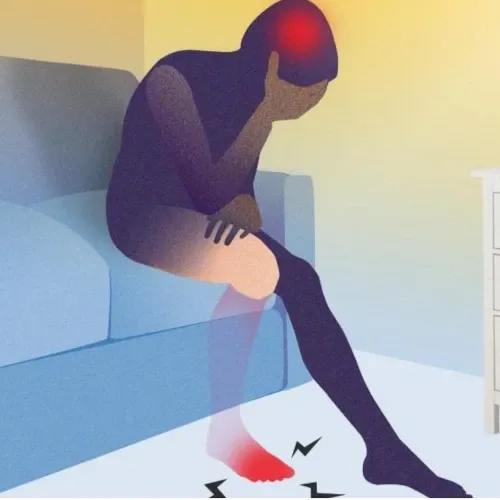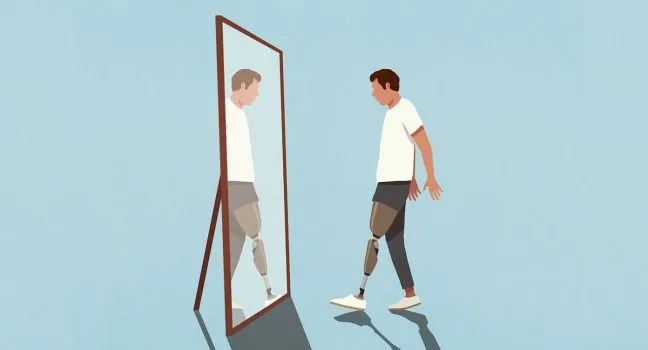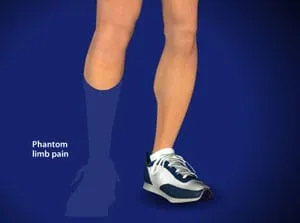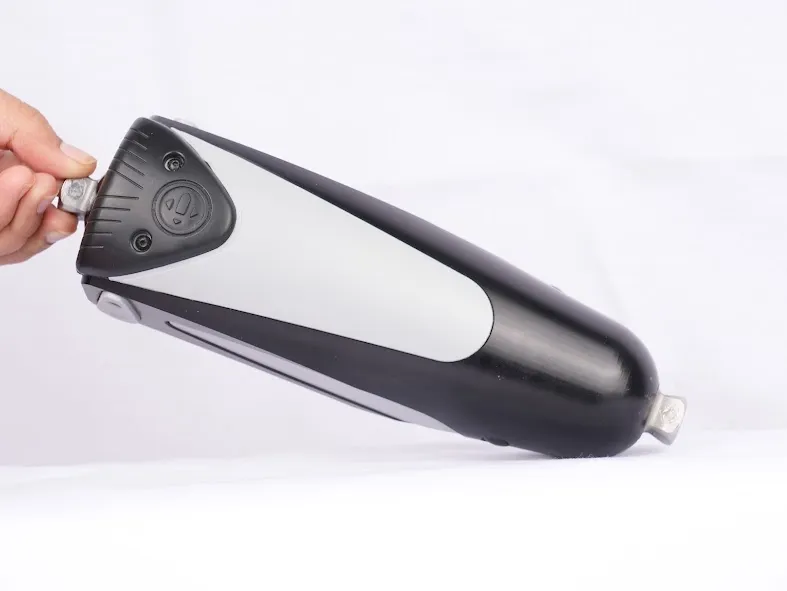
Losing a limb is a traumatic experience. Many amputees experience Phantom limb pain (PLP), a condition where the individual feels painful sensations in the limb that no longer exists. This pain often makes recovery challenging.
However, phantom limb pain treatments provide relief from pain. In this blog, we’ll explore doctor-recommended treatments to help you manage PLP, causes and tips.
What Is Phantom Limb Pain?
When amputees experience pain or sensation in their non-existent limb, it is called phantom limb pain. The pain is felt because the brain and nervous system send signals to the missing limb as if it were still present.
The pain can be a mild temporary sensation or a persistent pain, and it may continue for a few seconds to several hours.
Types of Phantom Limb Pain Sensations
Phantom limb pain sensations:
- Phantom Pain: Experiencing pain in the amputated limb.
- Phantom Sensations: When the person feels the sensations of touch, pressure, itching and temperature changes in the non-existent limb.
- Phantom Pain Syndrome: The individual experiences pain with itching or tingling.
- Residual Limb Pain (Stump Pain): Experience of pain in the stump from infection, poor prosthetic fit, or nerve issues.
What Does Phantom Limb Pain Feel Like?
Phantom limb pain involves sharp or distressing sensations:
- Such as aching or throbbing
- A burning or stinging feeling
- Tingling or pressure
- Numbness
- Severe stabbing
- Feeling hot or cold
- Cramping sensations
- Itching that feels impossible to scratch
- As if the limb is still attached
- Imagining it’s moving around or shrinking
What Causes Phantom Limb Pain?
Doctors cannot point out a particular cause of phantom limb pain, but nerve signal disruptions between the amputated limb and the brain may be a reason.
Key factors include:
- Nerve injury: Sometimes, damage to nerve endings in the amputation area may send faulty signals.
- Brain reorganisation: The brain adjusts after an amputation, so it may lead to errors in understanding signals as pain.
- Psychological causes: Extreme stress increases phantom pain.
- Poorly fitting prosthetics: Discomfort or pressure from a prosthetic.
Phantom Limb Pain Treatment Options
Phantom limb pain (PLP) treatment includes medications, non-pharmacological therapies, and surgical interventions, depending on the requirements.
Pharmacological Treatments
Medications are the first option for treating phantom limb pain. Common options include:
- Antidepressants:
Antidepressants are used to relieve neuropathic pain. - Anti-Seizure Medications:
Anticonvulsants help to relax nerve signals and reduce nerve-related pain. - Pain Relievers:
Sometimes, Over-the-counter medications help.
Non-Pharmacological Therapies

Non-invasive therapies can help reduce PLP symptoms.
- Mirror Therapy
The therapy makes the person believe that the missing limb is still present and
The therapy teaches the brain to reduce pain signals. - Transcutaneous Electrical Nerve Stimulation (TENS)
A TENS implants send tiny electrical impulses to the skin to reduce pain signals sent to the brain. - Massage
Massaging improves blood flow and calms discomfort in the residual limb. - Acupuncture
This stimulates the nervous system and releases natural pain-relieving chemicals. - Hot and Cold Therapy
Alternating between heating pads and ice packs may provide temporary relief from PLP.
Surgical and Advanced Interventions
Surgical or device-based approaches:
- Stump Revision Surgery
This brings relief at the amputation site and takes care of bone spurs or unhealed tissue. - Spinal Cord Stimulation (SCS)
SCS implants sends electrical impulses to the spinal cord to relieve pain. - Peripheral Nerve Stimulation (PNS)
This acts on specific peripheral nerves near the residual limb. - Botulinum Toxin Injections
Botox injections are effective in relaxing muscles and nerves.
Patients improve from a multidisciplinary approach that combines physical therapy, medications, and advanced techniques. They can return to an active pain pain-free life if they follow the doctor’s instructions on a regular basis.
Tips To Cope With Phantom Limb Pain
Phantom limb pain (PLP) treatment tips:
- Relaxation Techniques
Deep breathing, meditation, or exercises to reduce stress. - Healthy Sleep Routine
A regular sleep schedule heals and reduces fatigue and makes phantom pain easier to manage. - Prosthetic Fit
Well-fitted prosthetics to reduce skin irritation and nerve pain, and regular check-ups are important. - Emotional Support
Getting support from a group or a counsellor. Support groups provide a safe space to share doubts and fears, and the community helps to cope with it. A counsellor can give you the correct advice.
FAQs
1. What is phantom limb pain?
The pain felt in an amputated limb is known as phantom limb pain. It happens when the brain interprets nerve signals as if the missing body part is present.
2. How do you treat phantom pain?
Treatment includes medications, mirror therapy, TENS, physical therapy, and, in severe cases, surgical interventions like nerve blocks or TMR.
3. What causes phantom pain?
It is primarily caused by nerve signal disruptions and brain reorganisation after amputation, often worsened by stress or prosthetic discomfort.
4. Explain the difference between phantom limb syndrome and phantom limb sensation.
Phantom limb syndrome is painful sensations, while phantom limb sensations are feelings such as tingling, warmth, or movement.
5. Can phantom limb pain go away on its own?
For some people, symptoms may decrease over time, but many require a combination of treatments for lasting relief. The combination of medicines, therapy and exercises eventually gives relief.
6. What is a Phantom limb?
A phantom limb is the feeling that a missing limb, like an arm or leg, is still present after amputation.
7 .What is the sensation of pain felt in an amputated limb?
The pain felt in a missing limb is called phantom limb pain. It occurs when the brain interprets nerve signals from the amputation site as burning, throbbing, or sharp shooting sensations.

Conclusion
Phantom limb pain is not imaginary but a real experience for amputees. Relief is possible with the right phantom limb pain treatment and correct prosthetic solutions. If you have any queries or need solutions for phantom limb pain or correct treatment, book a consultation at KARE Prosthetics & Orthotics.
Take the first step toward a pain-free, active life and explore treatment options and prosthetic solutions tailored to your needs.
Key Takeaways
- Phantom limb pain (PLP) is a pain which is felt by amputees in a missing limb
- PLP symptoms: Burning, stabbing, tingling, throbbing, or itching sensations, and feeling movement in the missing limb.
- The person may be experiencing sensations, pain syndrome, or residual limb pain.
- Effective phantom limb pain treatment: antidepressants, pain relievers, as well as non-invasive therapies.
- For severe Phantom limb pain, advanced options include: spinal cord stimulation, peripheral nerve stimulation, or stump revision surgery.
- When phantom limb pain interrupts your daily life, seek medical attention.






